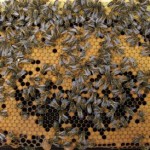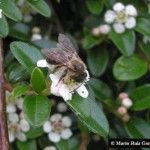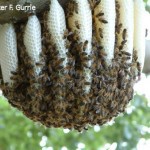


- Ireland has one species of honeybee (Apis mellifera). There are an estimated 24,000 bee hives in Ireland.
- The honeybee is native to Ireland but honeybees of French, Dutch, Italian and Russian extraction were imported here after disease wiped out many hives between the wars. The Irish honeybees fell in with this new company and today many of Ireland’s hives contain honeybees that are more cosmopolitan rather than native to these shores. Today the importation of honeybees is strongly discouraged to avoid introducing pests and diseases.
- Fortunately Ireland does still have reserves of the pure native strain of the Dark European Honey bee. The Galtee Bee Breeding Group was founded in 1991 with the object of conservation, study and improvement of local strains of our indigenous honeybee. The Native Irish Honey Bee Society was set up in 2012.
- A hive can contain up to 50,000 honeybees.
- Worker honeybees have a barbed sting. They can only sting mammals once as the sting catches in the skin and tears loose from the bees abdomen, leading to death in minutes. Honeybee queens have a smooth sting which they could use multiple times, but they rarely leave the hive, instead using their sting to dispatch rival queens.
- In the Stealthy Insect Sensor Project, Los Alamos scientists trained honeybees to recognize explosives. Honey bees natural reaction to nectar is to stick out their tongue. Los Alamos scientists trained them to do this when they detected explosives instead.
© 2024 All-Ireland Pollinator Plan | Web Design Vitamin Studio



